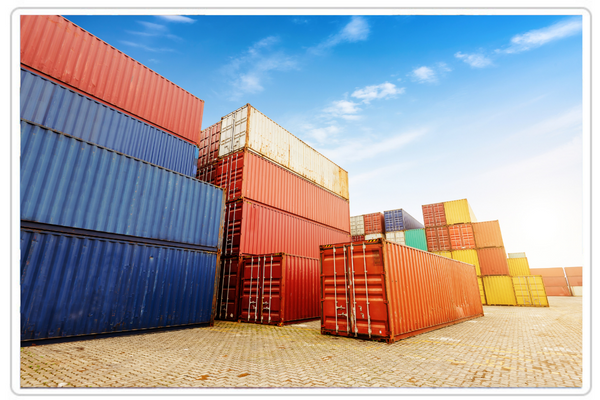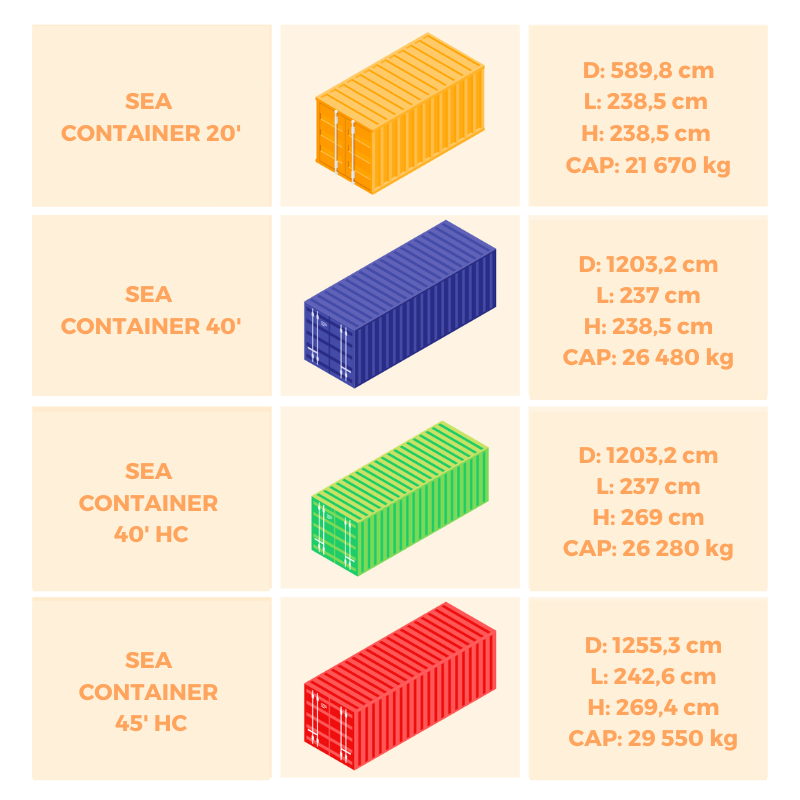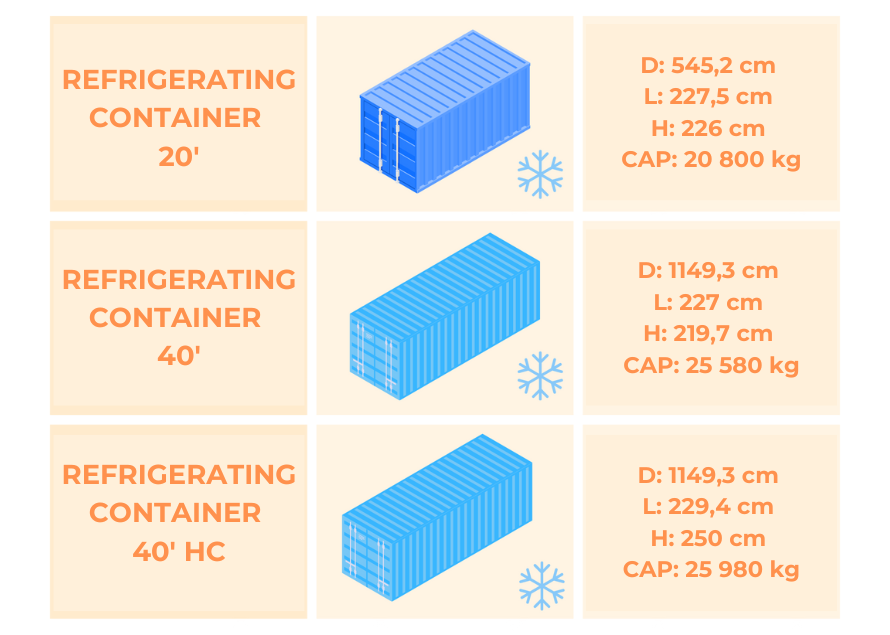Dimensions and types of containers

Sea transport is an inherent element of international transport in terms of costs and efficiency. Transporting a very large amount of groupage or oversized goods by sea is usually more cost-effective than in the case of road transport, especially if the load has a long route to travel. In sea transport, containers are most often used as cargo space. However, they differ from each other due to their dimensions and purpose.
Sea container
Sea containers are universal because they are used to transport all types of general cargo. After appropriate modification, they are also sometimes used to transport bulk cargo. In some industries, they are even used as residential containers. Their dimensions vary depending on the quantity and size of the goods being transported. The most popular is the twenty-foot container, then the 40-foot container which is slightly longer. In turn, the 40-foot and 45-foot HC (High Cube) are longer and taller than the others.

Refrigerated container
Refrigerated containers are used to transport goods that must be kept at a constant temperature. Most often they are food products, although it happens that some cosmetics, chemicals and dangerous goods must be transported in a controlled temperature. The walls of the refrigerated containers are covered with polyurethane foam, thanks to which it is able to maintain a constant temperature. When loading this type of container, leave a small space at the top to maintain adequate ventilation (this prevents condensation).

Other containers
Open-top containers - mainly used for the transport of goods that exceed the height of the container or will not fit through its door. Some loads are only loaded from the top with a crane, then also an open top container should be used. It happens that people responsible for the organization of sea transport decide to transport loose goods in this type of containers. A similar type of container is the so-called flat rack, which also has an open roof, but also sides. Platform container - intended for the transport of oversized goods. Their load capacity is much higher than the other containers. Tank container - it is a container in the form of a container for liquid goods, e.g. chemicals or liquids. The capacity of such a tank is about 20,000 liters.
What is worth remembering?
There are many factors to pay attention to when loading a container. The first step will be to choose the right container that will be adequate to the transported goods. Incorrectly selected container may result in additional costs (containers vary in price depending on their type). In addition, the container is not selected in accordance with its intended use, the goods may be damaged. Then remember about the weight, which should be evenly distributed over the entire surface of the container and not exceed the permissible overload. In order to meet the weight requirements and properly secure the loads, it is worth planning the distribution of loads on the container. The Smartload application can help with this - the containers described in the table can be found in the typical tab, in the cargo spaces. Attention! The dimensions of the containers may vary depending on the shipowner. However, they can be easily modified in the application, using the "adjust dimensions" option.